Table of Contents[Hide][Show]
- Nutrivore Score for Pumpkin Seeds – 271
- Pumpkin Seed Nutrition Facts
- Pumpkin Seed Nutrition Varies With Processing
- Pumpkin Nutrition Varies With Plant Component
Health Benefits of Pumpkin Seed Nutrients+−
- Pumpkin Seeds Provide 71% DV Vitamin E
- Pumpkin Seeds Provide 55% DV Manganese
- Pumpkin Seeds Provide 42% DV Copper
- Pumpkin Seeds Provide 39% DV Magnesium
- Pumpkin Seeds Provide 34% DV Linoleic Acid
- Pumpkin Seeds Provide 28% DV Phosphorus
- Pumpkin Seeds Provide 23% DV Monounsaturated Fatty Acids (MUFA)
- Pumpkin Seeds Provide 20% DV Zinc
- How Much Pumpkin Seeds Should We Eat Per Day?
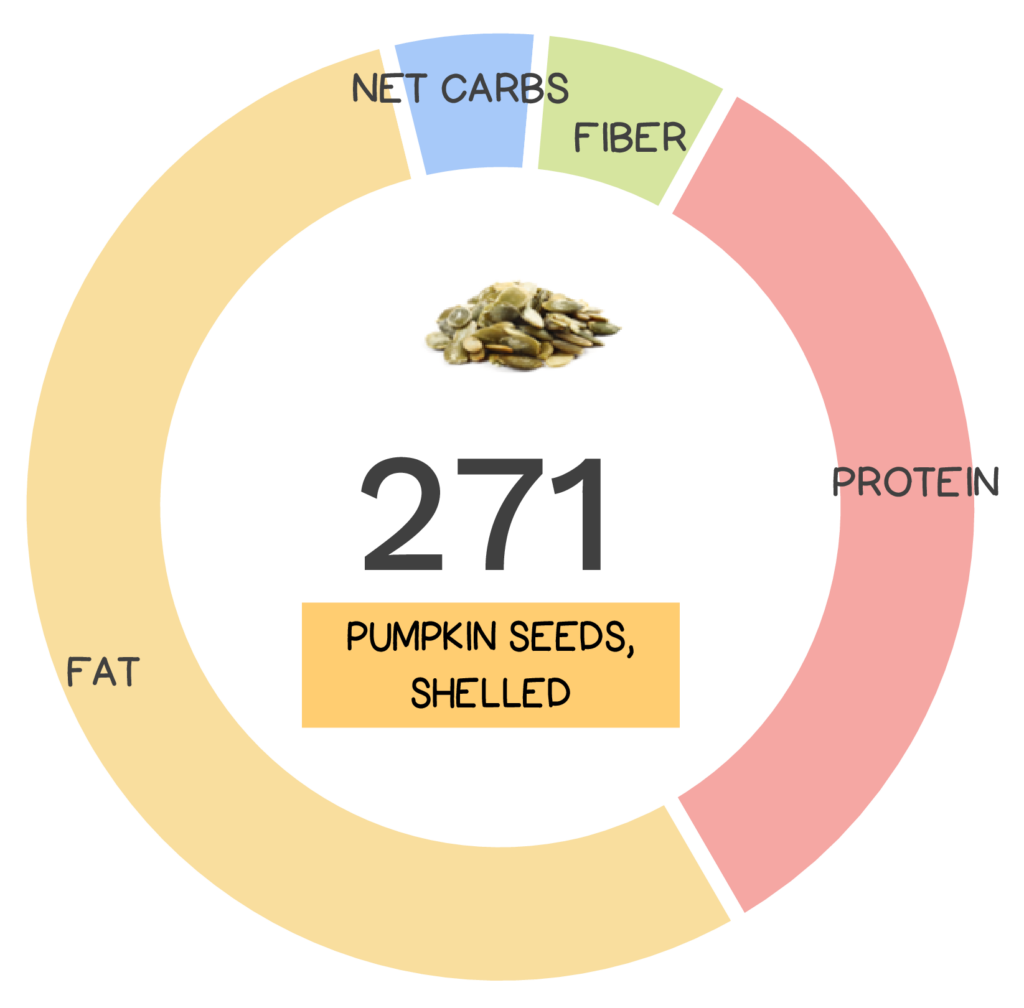
For some of us, snacking on pumpkin seeds is reserved for Halloween when we carve jack-o-lanterns at home, but pumpkin seeds (also known as pepitas), with their sweet, nutty, crunchy texture are a great year-round snack food, especially popular in Mexican cuisine.
Pumpkin seeds contain an outer white husk housing a green colored seed inside.
Pumpkin seeds prepared at home are likely to contain an outer white husk, housing the green colored seed inside. Although they are tasty, they can be difficult to digest but it isn’t practical (or even possible) to shell them at home. The olive-green seeds we buy at the store, often labelled as pepitas, which is a shortened version of the Spanish ‘pepita de calabaza’ meaning ‘little seed of squash’ are much more convenient to consume. These store-bought seeds don’t come from your typical Halloween pumpkin but are harvested from special varieties of pumpkin and squash that are purposely bred for their seeds that are tastier and are easier to extract from their shell or grow without any shell at all! For example, Styrian pumpkins (appropriately also known as hulless or naked-seeded pumpkins) were developed in Austria as a result of a natural mutant discovered 150 years ago. They are a yellowish-orange color with green striping and patches of darker orange and contain seeds with a thin coating instead of a shell, making them entirely edible. (Talk about squashing the competition!)
Pumpkin seeds are also known as pepitas, which is a shortened version of the Spanish ‘pepita de calabaza’ meaning ‘little seed of squash.’
Historically pumpkin seeds were consumed by Indigenous peoples of North America, in addition to being used in traditional Chinese medicine. Today, commercial varieties can be purchased raw or roasted, and salted or seasoned as a convenient snack food. These flat, oval seeds are also used as a garnish, a crunchy topping for salads and cereals or as part of baked goods such as breads and muffins. Pumpkin seeds can also be pressed for their oil, made into a type of nut butter, or even transformed into a type of fruit brandy! Due to their versatility and nutrition, their popularity is increasing. This is one snack food that is ready to suc-seed!
Learn How All Foods Can Fit into a Healthy Diet
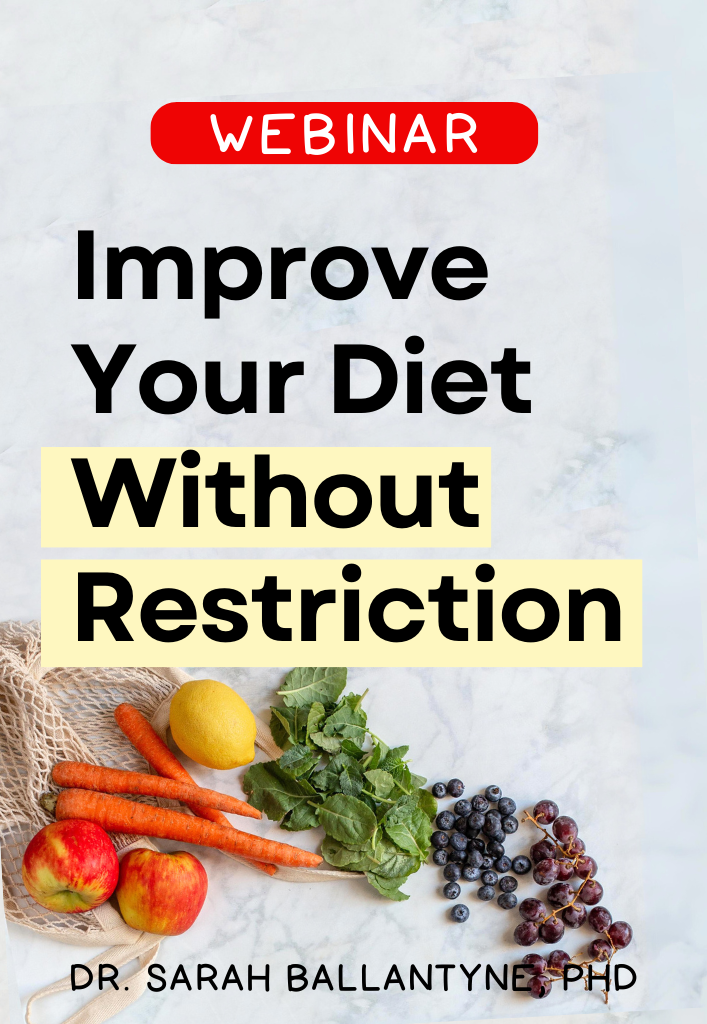
Improve Your Diet Without Restriction
Learn how to take a non-restrictive approach to eat nutrients, enjoy food, and live well.
In this webinar, Dr. Sarah will teach you how use Nutrivore to boost nutrient intake without drastic changes, improve your relationship with food, evaluate your diet’s quality, and adopt a balanced, moderation-focused mindset for long-term success. Say goodbye to the guilt-blame cycle and discover a nourishing approach to eating.
Buy now for instant digital access.
Nutrivore Score for Pumpkin Seeds – 271
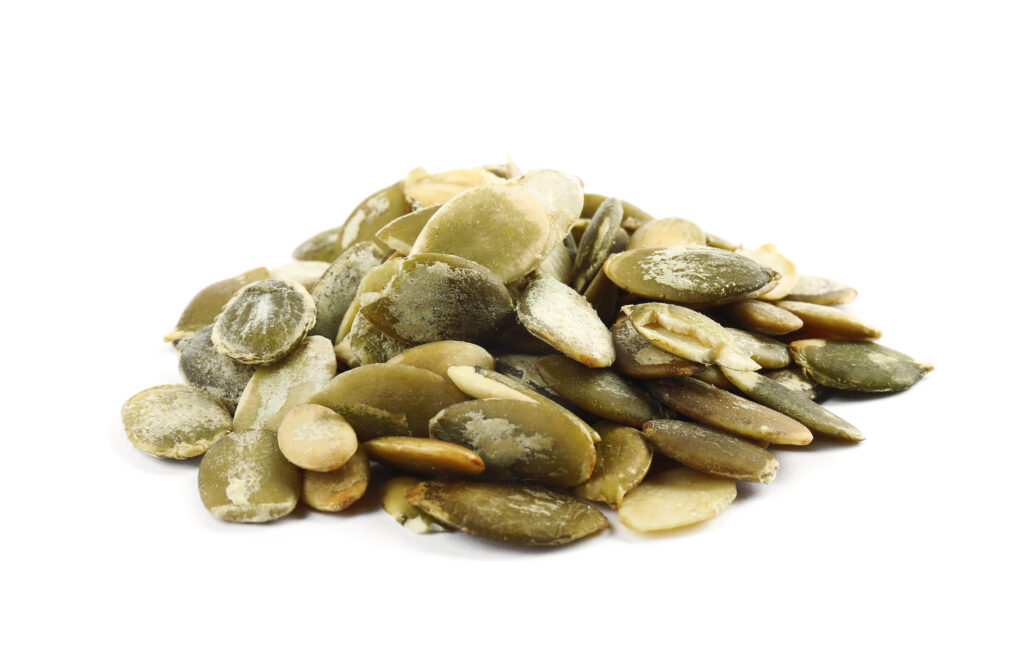
Pumpkin seeds (shelled and dried) have a Nutrivore Score of 271, making them a medium nutrient-dense food! Plus, they are a low-carb food; pumpkin seeds have 1.3 grams of net carbs per 1-ounce serving!
Per serving, pumpkin seeds are a best source (>50% daily value) of manganese and vitamin E; an excellent source (20-50% daily value) of copper, linoleic acid, magnesium, monounsaturated fatty acids (MUFA), phosphorus, and zinc; and a good source (10-20% daily value) of iron, protein, and vitamin B7 (biotin).
Ditch Diets. Embrace Nutrients. Start with this FREE Guide.
Sign up for the free Nutrivore Newsletter, your weekly, science-backed guide to improving health through nutrient-rich foods — without dieting harder —and get the Beginner’s Guide to Nutrivore delivered straight to your inbox!

Pumpkin Seed Nutrition Facts
One serving of pumpkin seeds is standardized to 1 ounce or about 28 grams. To put that into perspective: one serving of pumpkin seeds is equivalent to 1/5 cup or roughly 3 tablespoons of shelled pumpkin seeds.
Pumpkin Seed Nutrition Facts Per Serving
| Pumpkin seeds, dried | Nutrivore Score: 271 | Nutrient Density: Medium |
|---|---|---|
| Serving Size: 1 ounce (28 grams) | Protein: 8.5 grams | Net Carbohydrates: 1.3 grams |
| Calories: 157 | Total Fat: 13.7 grams | Dietary Fiber: 1.7 grams |
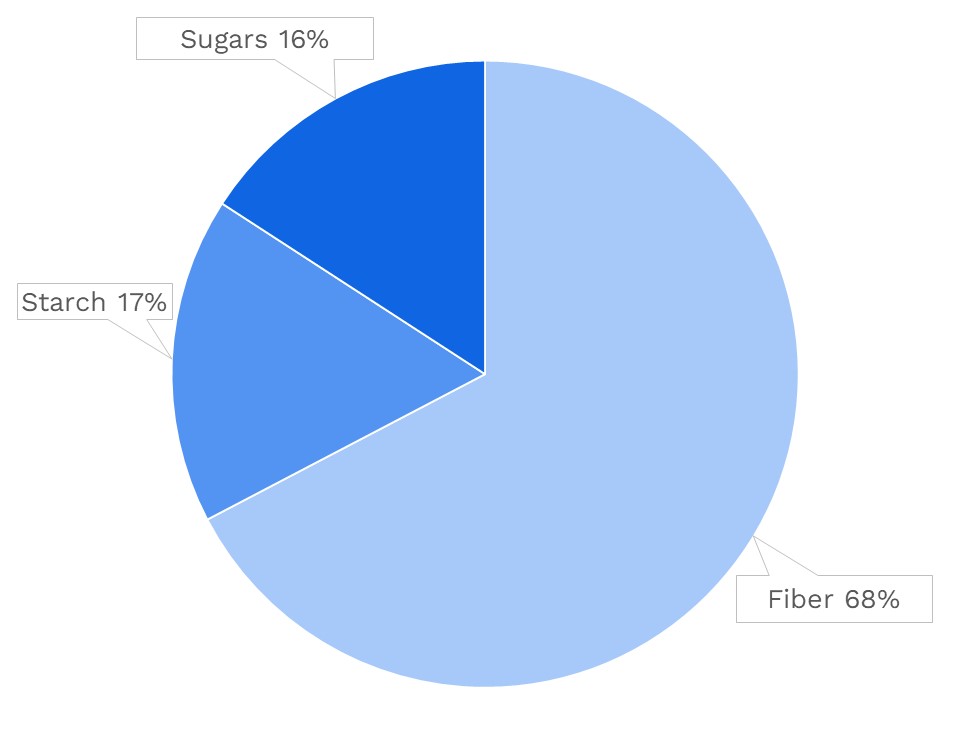
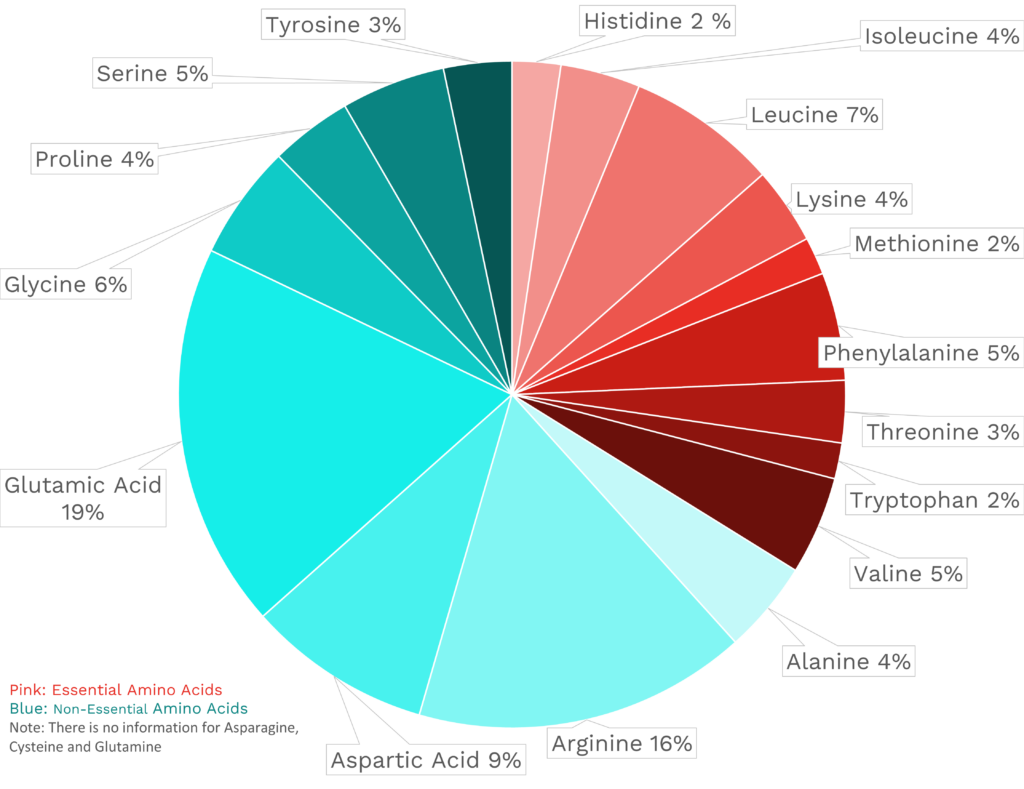
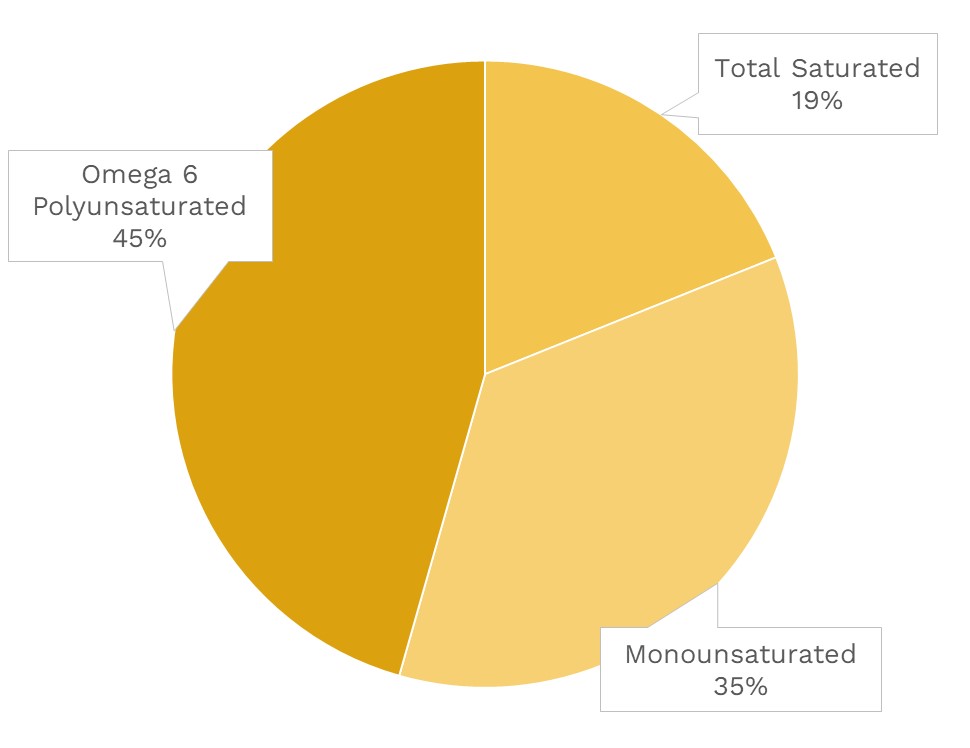
| VITAMINS | ||
|---|---|---|
| Vitamin A | 0.3 μg RAE | 0% DV |
| Vitamin B1 (Thiamin) | 76.4 μg | 6% DV |
| Vitamin B2 (Riboflavin) | 42.8 μg | 3% DV |
| Vitamin B3 (Niacin) | 1.4 mg | 9% DV |
| Vitamin B5 (Pantothenic Acid) | 0.2 mg | 4% DV |
| Vitamin B6 (Pyridoxine) | 40.0 μg | 2% DV |
| Vitamin B7 (Biotin) | 3.6 μg | 12% DV |
| Vitamin B9 (Folate) | 16.2 μg | 4% DV |
| Vitamin B12 (Cobalamin) | 0.0 μg | 0% DV |
| Vitamin C | 0.5 mg | 1% DV |
| Vitamin D (D2 + D3) | 0.0 μg | 0% DV |
| Vitamin E | 10.6 mg | 71% DV |
| Vitamin K | 2.0 μg | 2% DV |
| Choline | 17.6 mg | 3% DV |
| Myo-Inositol | ~ | ~ |
| CoQ10 | ~ | ~ |
| FUNCTIONAL FATS | ||
|---|---|---|
| MUFA | 4.5 g | 23% DV |
| ALA | 33.6 mg | 2% DV |
| EPA + DHA | 0.0 mg | 0% DV |
| CLA | 1.1 mg | ~ |
| Linoleic Acid | 5.8 g | 34% DV |
| MCT’s | 0.0 g | ~ |
| MINERALS | ||
|---|---|---|
| Calcium | 12.9 mg | 1% DV |
| Copper | 376.0 μg | 42% DV |
| Iodine | ~ | ~ |
| Iron | 2.5 mg | 14% DV |
| Magnesium | 165.8 mg | 39% DV |
| Manganese | 1272.0 μg | 55% DV |
| Phosphorus | 345.2 mg | 28% DV |
| Potassium | 226.5 mg | 5% DV |
| Selenium | 2.6 μg | 5% DV |
| Sodium | 2.0 mg | 0% DV |
| Zinc | 2.2 mg | 20% DV |
| PHYTONUTRIENTS | ||
|---|---|---|
| Carotenoids | 23.8 μg | ~ |
| Polyphenols | 63.4 mg | ~ |
| Phytosterols | 77.8 mg | ~ |
| Glucosinolates | ~ | ~ |
| Thiosulfinates | ~ | ~ |
| Betalains | ~ | ~ |
| AMINO ACIDS & PEPTIDES | ||
|---|---|---|
| Taurine | ~ | ~ |
| Ergothioneine | 0.0 mg | ~ |

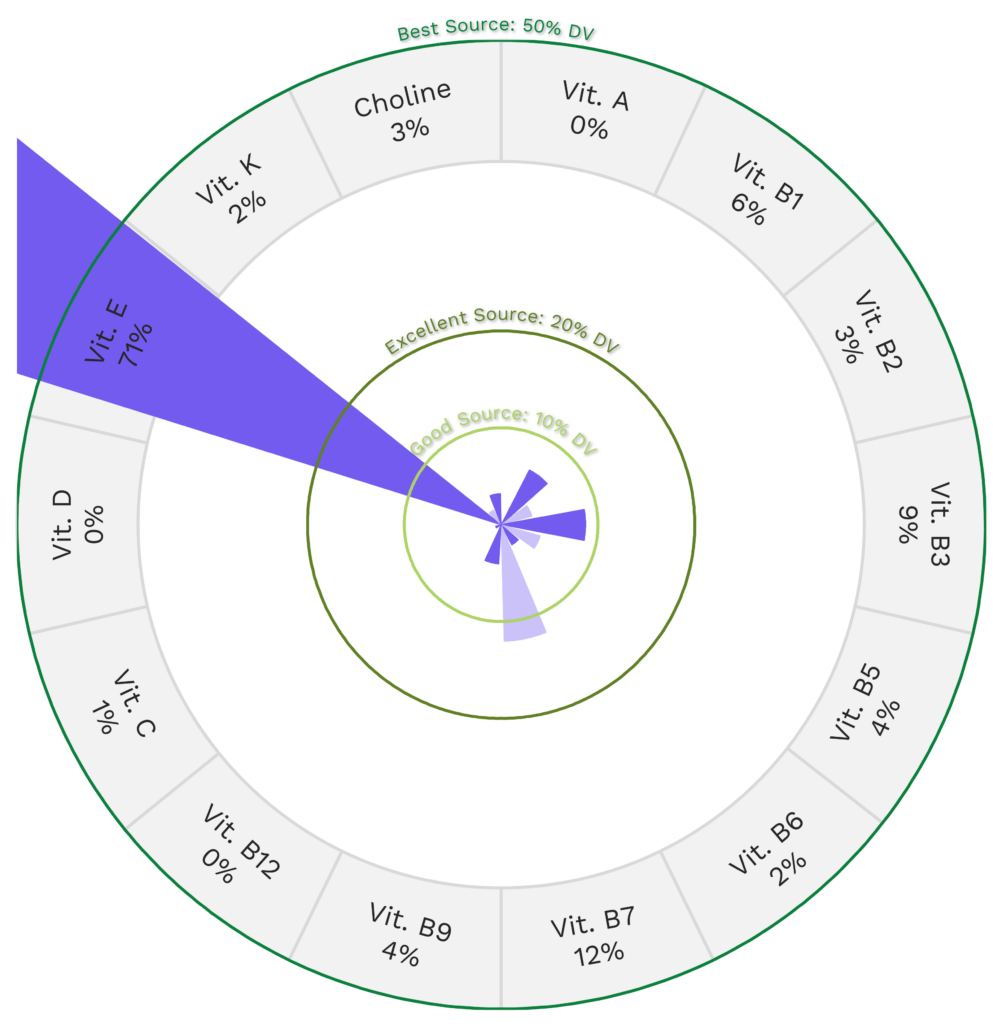
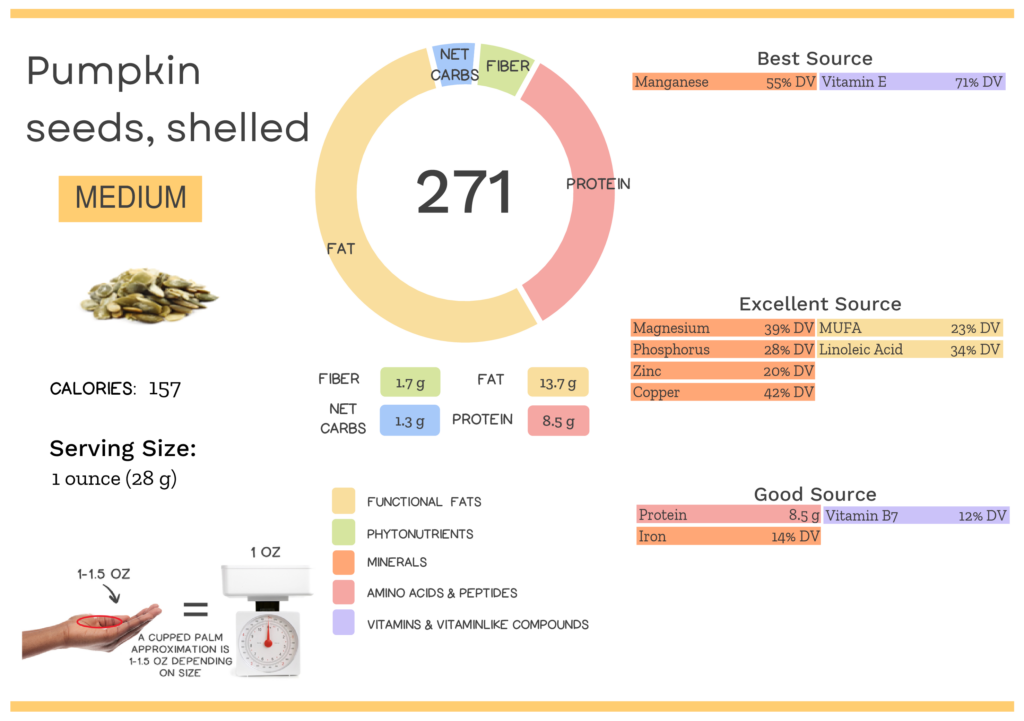
Pumpkin Seed Nutrition Varies With Processing
The Nutrivore Score of pumpkin seeds varies depending on processing. For instance, pumpkin seeds can be purchased with shell or without.
| NUTRIVORE SCORE | |
|---|---|
| Pumpkin and squash seeds, kernels, dried | 271 |
| Pumpkin and squash seeds, kernels, roasted, with salted added | 224 |
| Pumpkin and squash seeds, kernels, roasted, without salt | 224 |
| Pumpkin and squash seeds, whole, roasted, with salt added | 1161 |
| Pumpkin and squash seeds, whole, roasted, without salt | 1161 |
Pumpkin Nutrition Varies With Plant Component
Pumpkin is a versatile plant with multiple edible parts (in fact, you can pretty much eat all of them). Of course, the Nutrivore Score will vary widely based on which part of the plant is being consumed as each component has its own unique nutritional benefits!
| NUTRIVORE SCORE | |
|---|---|
| Pumpkin and squash seeds, kernels, dried | 271 |
| Pumpkin flesh, raw | 1036 |
| Pumpkin flowers, raw | 15641 |
| Pumpkin leaves, raw | 1840 |
Did all the nutrition in pepitas ex-seed your expectations? Maybe your friends will be impressed too!
Health Benefits of Pumpkin Seed Nutrients
Let’s take a closer look at all of the best and excellent source of nutrients found in a 1-ounce serving of pumpkin seeds and see how they benefit our health.
Pumpkin Seeds Provide 71% DV Vitamin E
Pumpkin seeds are a best source of vitamin E, providing 71% of the daily value per 1-ounce serving!

Vitamin E is actually a group of eight different vitamins, though the form alpha-tocopherol is the most biologically important. Its most significant role is as a fat-soluble antioxidant, protecting the lipids in cell membranes from oxidative damage. Its free radical-scavenging abilities make vitamin E helpful for cardiovascular health, cancer protection, neurological health (including slowing the progression of Alzheimer’s disease), and any situations where oxidative stress increases (such as during pregnancy). There’s even evidence that getting enough vitamin E can reduce the risk of the common cold! Learn more about vitamin E here.
Pumpkin Seeds Provide 55% DV Manganese
Pumpkin seeds are also a best source of manganese, providing 55% of the daily value per 1-ounce serving!
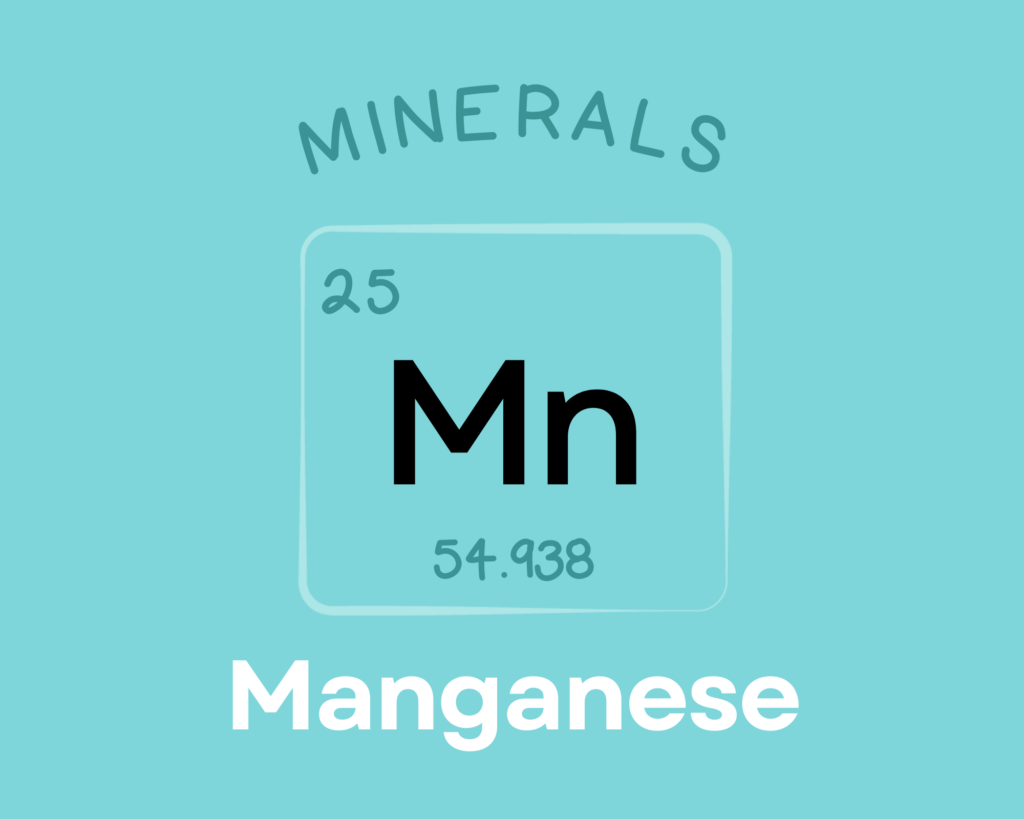
Manganese is an essential mineral that serves as a cofactor and component of numerous enzymes. Through these roles, it’s involved in carbohydrate metabolism, amino acid synthesis, gluconeogenesis, detoxification, lipid processing, free radical defense, bone and collagen formation, and wound healing. Although the research so far is limited, some evidence suggests that manganese can protect against osteoporosis and diabetes, and may even be involved in seizure disorders. Learn more about manganese here.
Pumpkin Seeds Provide 42% DV Copper
Pumpkin seeds are an excellent source of copper, providing 42% of the daily value per 1-ounce serving!
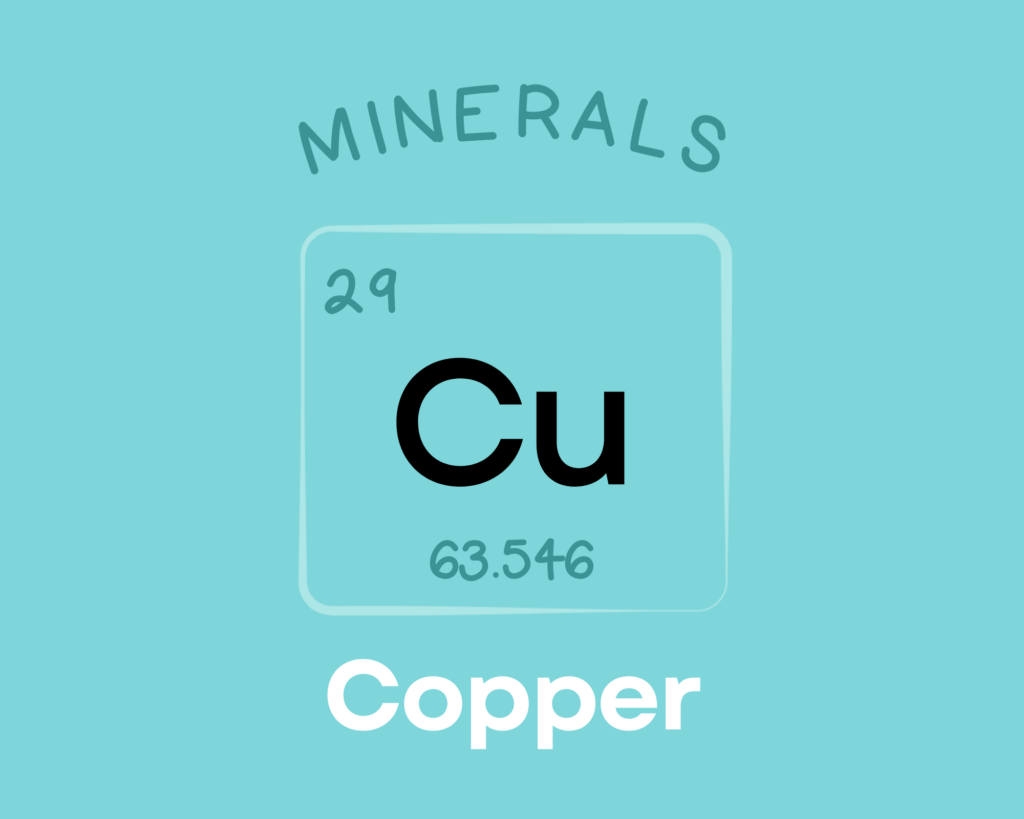
Copper is a trace mineral that’s essential for all living organisms. Copper serves as a component of numerous enzymes and proteins in the body, giving it diverse roles in the growth, development, and maintenance of various organs (including the heart and brain), bone, and connective tissue. Copper is also involved in glucose and cholesterol metabolism, helps regulate gene expression, can scavenge free radicals, and is needed for the production of red blood cells. Learn more about copper here.
Pumpkin Seeds Provide 39% DV Magnesium
Pumpkin seeds are also an excellent source of magnesium, providing 39% of the daily value per 1-ounce serving!
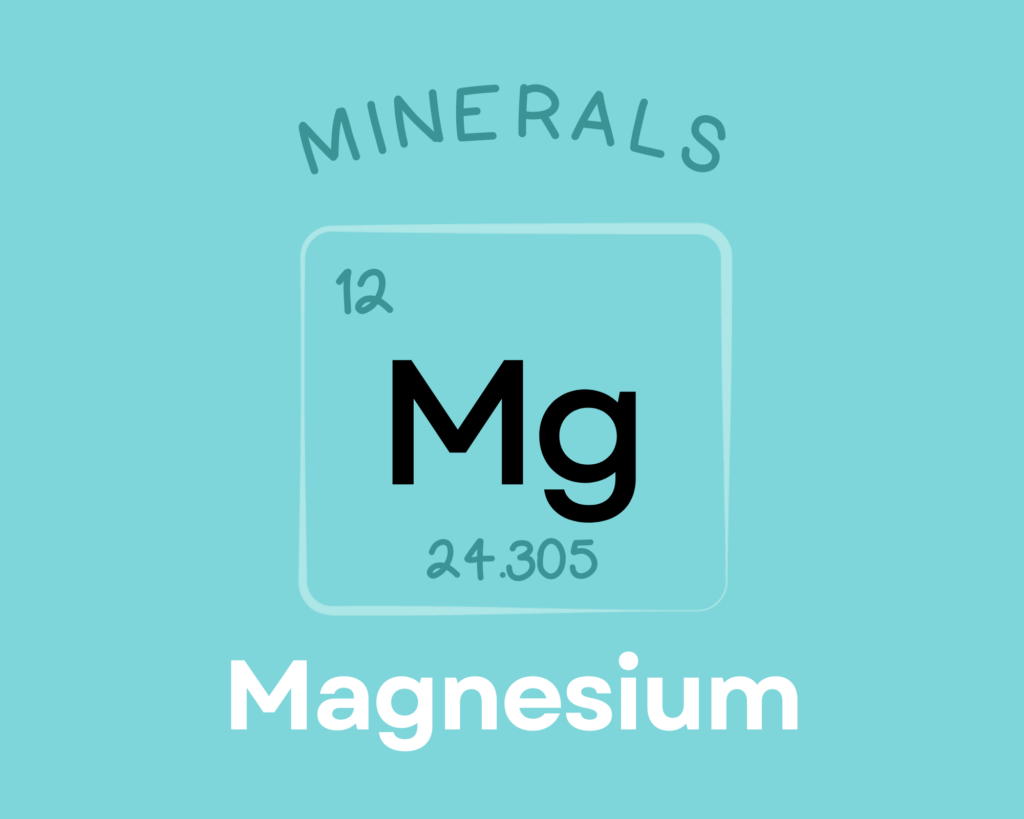
Magnesium is an essential mineral needed by every cell in the body. As an electrolyte, it’s important for regulating fluid balance, nerve and muscle function, blood pH, and neurotransmission. It also serves as a cofactor for hundreds of different enzymes, giving it a role over 300 metabolic reactions—including pathways for cell signaling, energy production, protein synthesis, nucleic acid synthesis, and ion transport. Magnesium also has important structural functions in cells and bone tissue. Consuming enough magnesium may help protect against a variety of chronic diseases, including cardiovascular disease, type 2 diabetes, and osteoporosis. Learn more about magnesium here.
Pumpkin Seeds Provide 34% DV Linoleic Acid
Pumpkin seeds are an excellent source of linoleic acid, providing 34% of the daily value per 1-ounce serving!
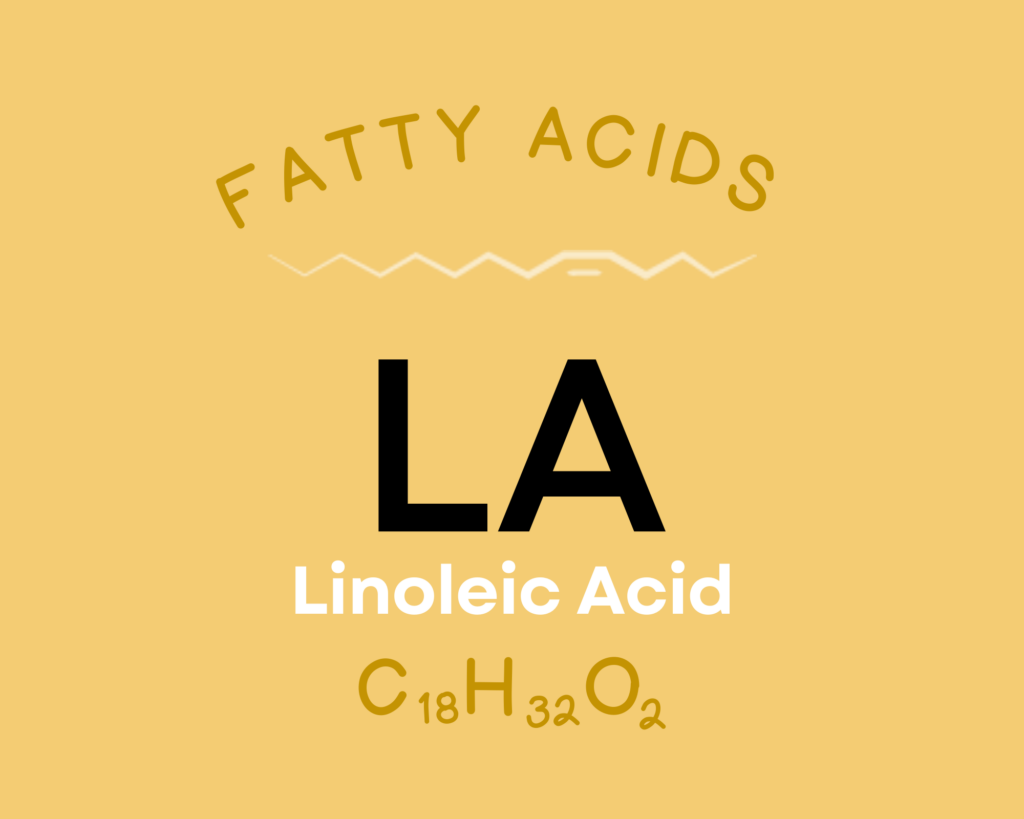
Linoleic acid is the only essential omega-6 fatty acid. Along with being required for human growth and development, it serves as a structural component of cell membranes, plays a role in maintaining skin health and integrity, and is a precursor for bioactive lipid mediators. Although linoleic acid can lower LDL cholesterol levels, research hasn’t consistently shown any protective effect against heart disease. Likewise, there’s mixed evidence (some showing benefit, some showing harm) for the effects of linoleic acid on cancer. Higher intakes have also been associated with depression and obesity, although it may have a protective effect against diabetes. Learn more here.
Pumpkin Seeds Provide 28% DV Phosphorus
Pumpkin seeds are also an excellent source of phosphorus, providing 28% of the daily value per 1-ounce serving!
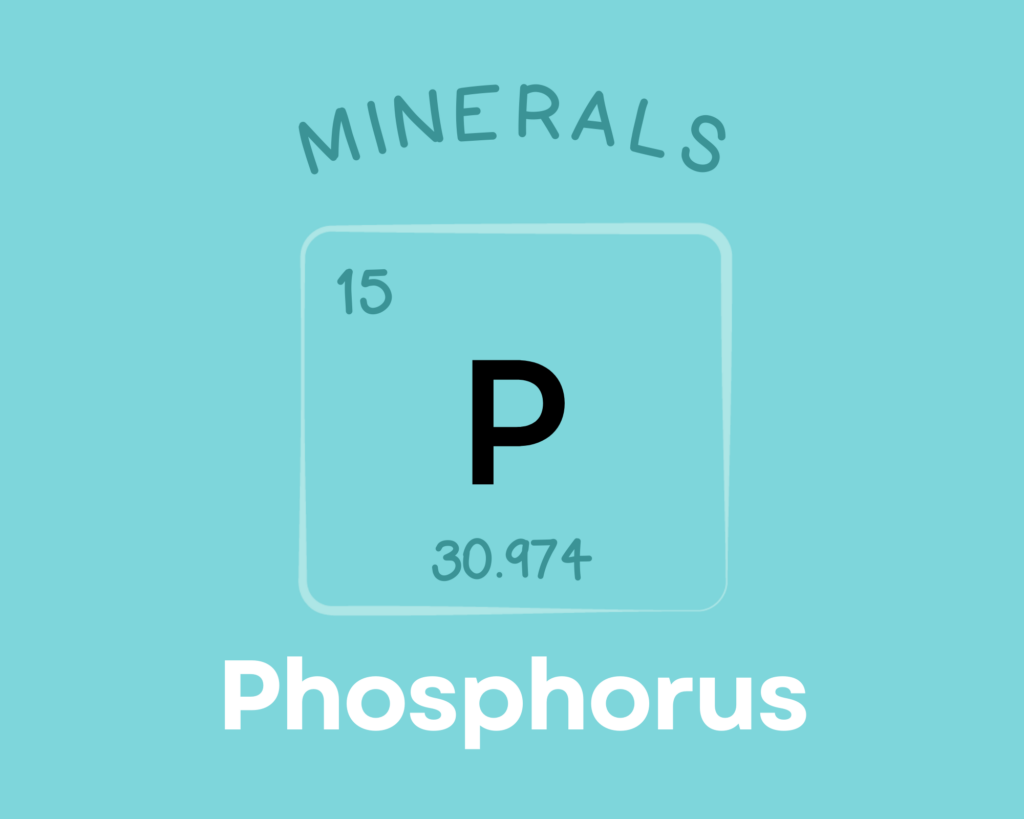
Phosphorus is an essential mineral that makes up about 1% of the total weight of the human body. Along with serving an important structural role for building nucleic acids and cell membranes, phosphorus is involved in numerous biological processes—including acid-base regulation, energy production, cell signaling, and bone mineralization. Excess phosphorus has been linked to a higher risk of cardiovascular disease, fractures, and osteoporosis, especially in the context of a low-calcium diet. Learn more about phosphorus here.
Pumpkin Seeds Provide 23% DV Monounsaturated Fatty Acids (MUFA)
Pumpkin seeds are an excellent source of monounsaturated fatty acids (MUFA), providing 23% of the daily value per 1-ounce serving!
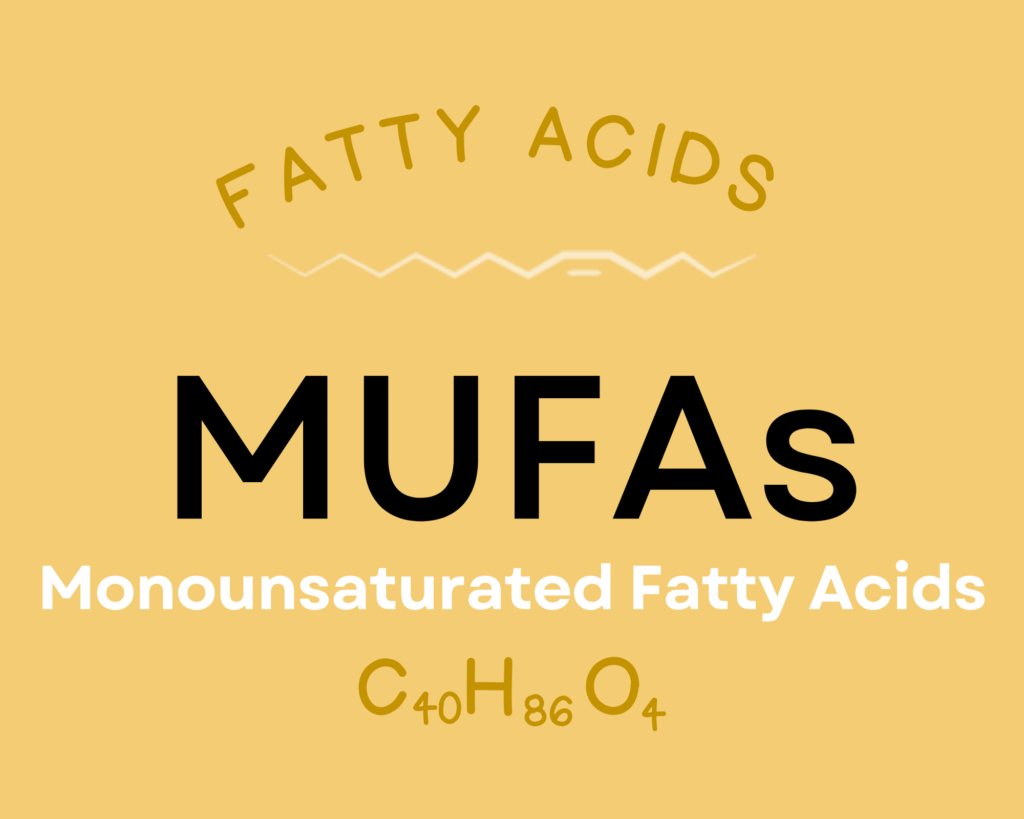
Monounsaturated fatty acids (MUFA), the most abundant of which is oleic acid, play an important role in cellular function due to its presence in phospholipids in cell membranes. Oleic acid is beneficial for cardiovascular health—both in reducing risk factors like high blood pressure, cholesterol, triglycerides, inflammation, and oxidative stress, and in reducing actual cardiovascular disease incidence and events. Oleic acid has even demonstrated anti-cancer activity, with an ability to inhibit the progression, proliferation, and metastasis of several types of cancer cells. Research shows this fat could benefit body weight regulation and obesity through its effects on energy metabolism and lipogenesis. In fact, human trials show that enriching diets with oleic acid leads to decreases in central obesity, abdominal fat, body weight, and food intake, while also possibly increasing energy expenditure! Oleic acid also possesses some benefits for diabetics—influencing genes and pathways involved in insulin signaling and glucose metabolism, as well as helping protect against some complications of diabetes, like diabetic retinopathy and atherosclerosis. Learn more about oleic acid here.
Pumpkin Seeds Provide 20% DV Zinc
Pumpkin seeds are also an excellent source of zinc, providing 20% of the daily value per 1-ounce serving!
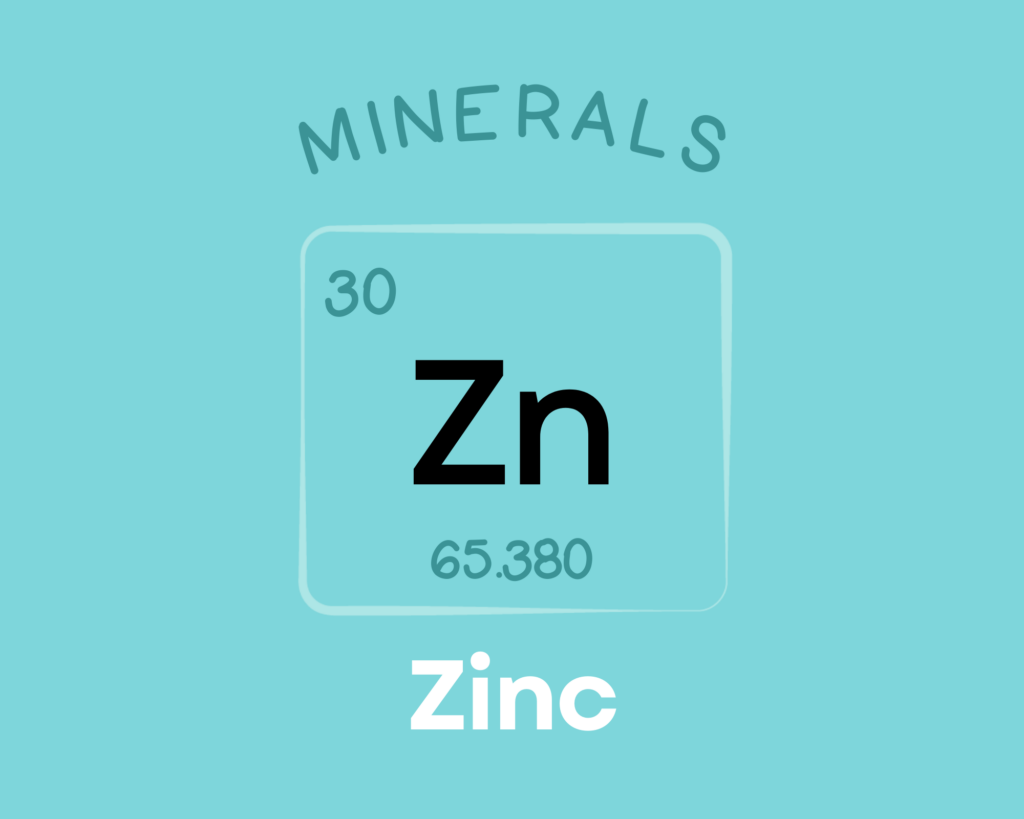
Zinc is an essential trace mineral that serves as a cofactor for over 300 enzymes and 1000 transcription factors, giving it important roles in immune function, sensory organ function, reproduction, gene regulation, DNA synthesis, wound healing, and the metabolism and activity of multiple other nutrients. Research shows it can reduce the duration of the common cold when taken shortly after the onset of illness, and can also benefit immune health in the elderly and among HIV/AIDS patients. Some studies also suggest a protective role of zinc in neurological conditions like Alzheimer’s disease and depression. Learn more about zinc here.
Want to know the top 500 most nutrient-dense foods?
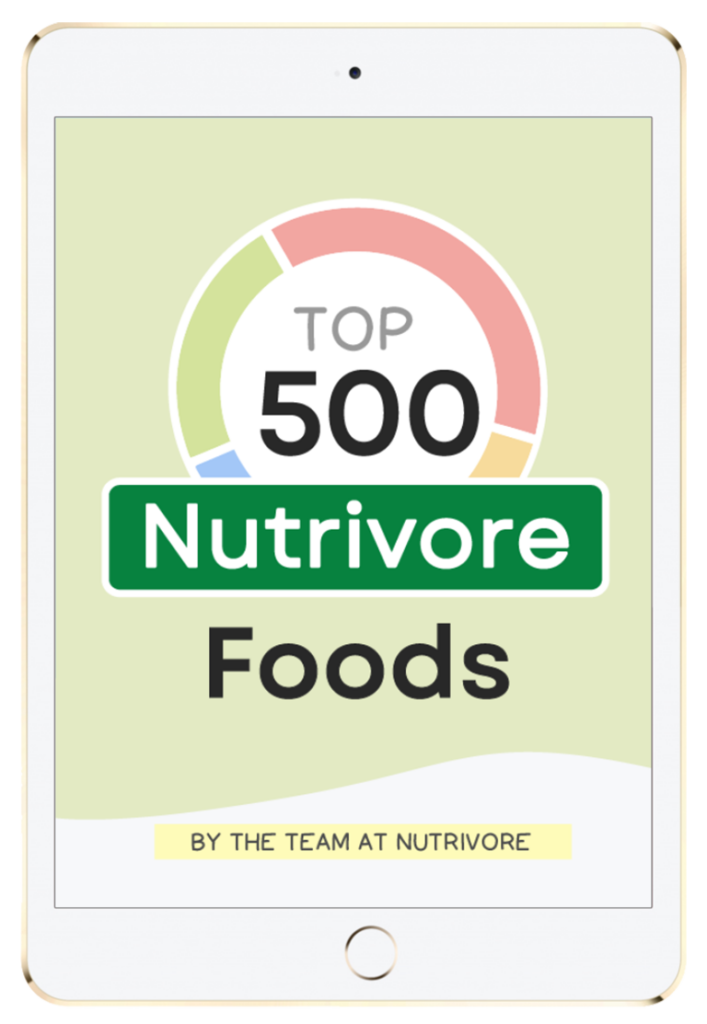
Top 500 Nutrivore Foods
The Top 500 Nutrivore Foods e-book is an amazing reference deck of the top 500 most nutrient-dense foods according to their Nutrivore Score. Think of it as the go-to resource for a super-nerd, to learn more and better understand which foods stand out, and why!
If you are looking for a quick-reference guide to help enhance your diet with nutrients, and dive into the details of your favorite foods, this book is your one-stop-shop!
Buy now for instant digital access.
How Much Pumpkin Seeds Should We Eat Per Day?
Not only do seeds make for a tasty and convenient snack food, all the nutrition found within these tiny nuggets of goodness might just ex-seed your expectations!
Nuts and seeds are some of the most nutritious, whole-food healthy fat sources out there! They have been associated with lower rates of a variety of chronic diseases and all-cause mortality. In a study of adults at high risk of cardiovascular disease, eating more than three servings of nuts per week resulted in a 39% reduced risk of death from all causes. Nut and seed consumption is also associated with lower body mass index, lower waist circumference, and lower occurrence of type 2 diabetes.
In a meta-analysis encompassing 354,933 total participants, one serving of nuts per day was associated with a 27% reduced risk of all-cause mortality and a 39% reduced risk of cardiovascular disease mortality, and the highest nut consumers saw a 14% reduced risk of cancer mortality. Additional research has shown that nut consumption is associated with lower risk of mortality from respiratory diseases (52% reduced risk), neurodegenerative disease (35% reduced risk), infectious disease (75% reduced risk), and kidney disease (73%).
However, there are some compelling reasons not to “go nuts” on nuts (hyuck, see what I did there?). Health benefits of nut and seeds consumption do not continue to increase beyond about 1 ounce (28 grams) per day, and there’s some evidence that consuming large amounts of nuts daily can increase disease risk (at least for stroke). That means eating more than a palmful per day won’t do us any favors (and may potentially undermine our health). And, nuts should be avoided by people with allergies or sensitivities (in which case, seeds can deliver comparable health benefits).
While not every nut or seed has been extensively studied, we can expect variety to be important. For instance, every nut and seed that has been evaluated in terms of its impact on the gut microbiome shows unique benefits. So again, mix it up as in “mixed nuts!” (Hyuck)
Easily track your servings of Nutrivore Foundational Foods!

The Nutrivore Weekly Serving Matrix
The Nutrivore Weekly Serving Matrix digital resource is an easy-to-use and flexible weekly checklist designed to help you maximize nutrient-density and meet serving suggestions of Nutrivore foundational foods, all without having to weigh or measure your foods!
Includes a 22-page instructional guide and downloadable interactive guides.
Buy now for instant digital access.
cITATIONS
Expand to see all scientific references for this article.
Ey J, Schömig E, Taubert D. Dietary sources and antioxidant effects of ergothioneine. J Agric Food Chem. 2007 Aug 8;55(16):6466-74. doi: 10.1021/jf071328f. Epub 2007 Jul 6. PMID: 17616140.
Phillips KM, Ruggio DM, Ashraf-Khorassani M. Phytosterol composition of nuts and seeds commonly consumed in the United States. J Agric Food Chem. 2005 Nov 30;53(24):9436-45. doi: 10.1021/jf051505h. PMID: 16302759.
Saavedra MJ, Aires A, Dias C, Almeida JA, De Vasconcelos MC, Santos P, Rosa EA. Evaluation of the potential of squash pumpkin by-products (seeds and shell) as sources of antioxidant and bioactive compounds. J Food Sci Technol. 2015 Feb;52(2):1008-15. doi: 10.1007/s13197-013-1089-5. Epub 2013 Jul 12. PMID: 25694712; PMCID: PMC4325009.
USDA Food Central Database: Seeds, pumpkin and squash seed kernels, dried
Watanabe T, Kioka M, Fukushima A, Morimoto M, Sawamura H. Biotin content table of select foods and biotin intake in Japanese. Int J Anal Bio-Sci. 2014. Vol 2(4):109-125.


